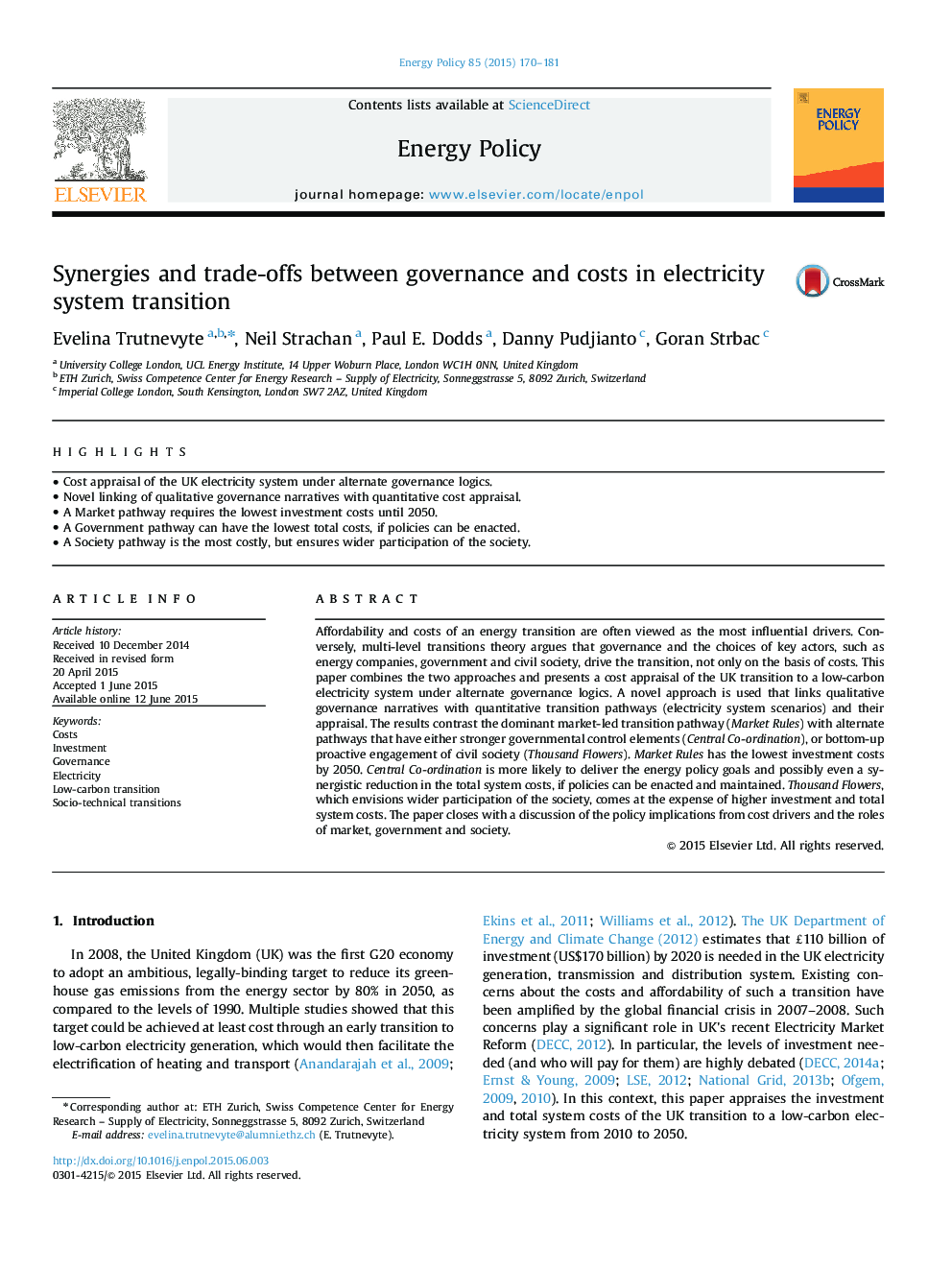| Article ID | Journal | Published Year | Pages | File Type |
|---|---|---|---|---|
| 7400823 | Energy Policy | 2015 | 12 Pages |
Abstract
Affordability and costs of an energy transition are often viewed as the most influential drivers. Conversely, multi-level transitions theory argues that governance and the choices of key actors, such as energy companies, government and civil society, drive the transition, not only on the basis of costs. This paper combines the two approaches and presents a cost appraisal of the UK transition to a low-carbon electricity system under alternate governance logics. A novel approach is used that links qualitative governance narratives with quantitative transition pathways (electricity system scenarios) and their appraisal. The results contrast the dominant market-led transition pathway (Market Rules) with alternate pathways that have either stronger governmental control elements (Central Co-ordination), or bottom-up proactive engagement of civil society (Thousand Flowers). Market Rules has the lowest investment costs by 2050. Central Co-ordination is more likely to deliver the energy policy goals and possibly even a synergistic reduction in the total system costs, if policies can be enacted and maintained. Thousand Flowers, which envisions wider participation of the society, comes at the expense of higher investment and total system costs. The paper closes with a discussion of the policy implications from cost drivers and the roles of market, government and society.
Related Topics
Physical Sciences and Engineering
Energy
Energy Engineering and Power Technology
Authors
Evelina Trutnevyte, Neil Strachan, Paul E. Dodds, Danny Pudjianto, Goran Strbac,
